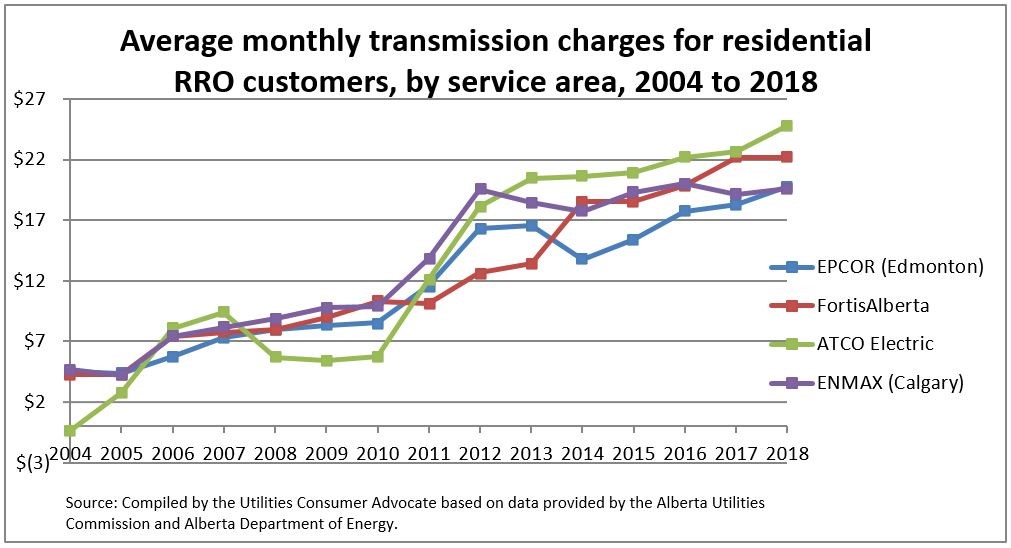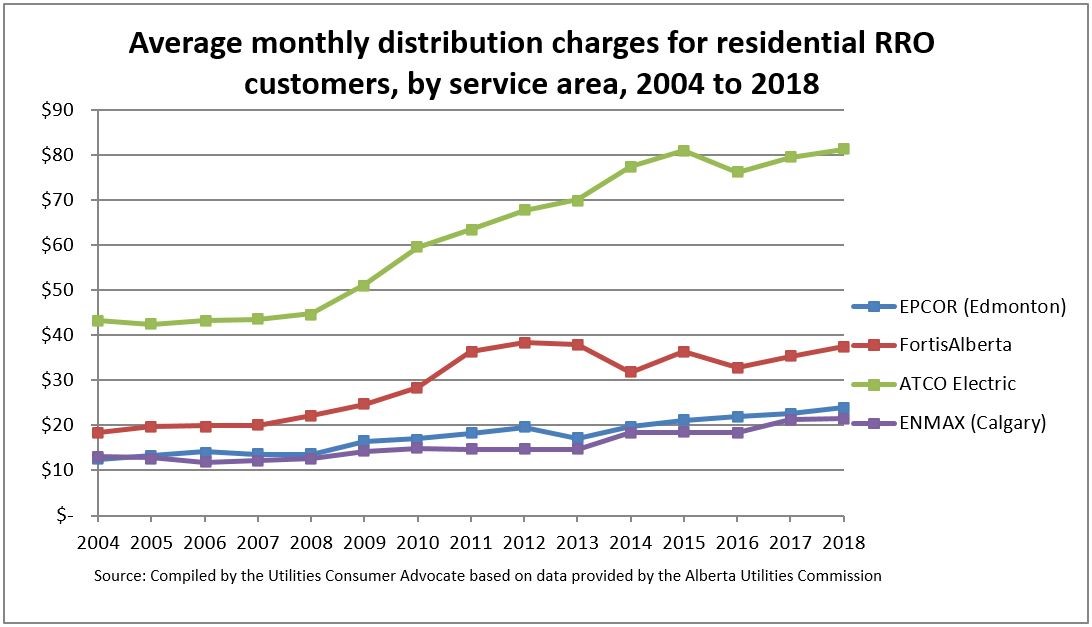Disparity in Transmission and Distribution Charges Across Alberta
IT IS THEREFORE RESOLVED THAT AUMA advocate for the Province to implement a modernized electrical system that has reasonable and predictable prices in order to support economic development throughout Alberta.
FURTHER BE IT RESOLVED THAT AUMA advocate for the AUC to reduce the disparity in electricity pricing for transmission and distribution charges across the Province.
WHEREAS the cost of transmission and distribution of electricity to customers is causing a disparity in prices across Alberta;
WHEREAS electricity prices, which are becoming extraordinarily high in some service areas, are regulated by the Alberta Utilities Commission (AUC) for residential, farm and commercial customers in rural and urban areas;
WHEREAS in 2018, monthly transmission charges paid by the average residential customer with 600 kWh of consumption ranged from $19.75 (in more urban service area) to $24.82 (in a more rural service area); [1]
WHEREAS in 2018, monthly distribution charges paid by the average residential customer with 600 kWh of consumption ranged from $21.58 (in a more urban service area) to $81.24 (in a more rural service area);[2] and
WHEREAS distribution and transmission rates may be different in each area of the Province because they incur different costs to build, operate and maintain their system depending on how big the system is, how new it is and how many customers are sharing the cost. A distribution company that serves rural areas will cost more than a system that serves urban areas because the utility must build, operate and maintain more poles, wires and facilities to serve each customer. [3]
[1] Utilities Consumer Advocate: Electricity Transmission and Distribution Charges
https://ucahelps.alberta.ca/electricity-transmission-and-distribution-charges.aspx
[2] Utilities Consumer Advocate: Electricity Transmission and Distribution Charges
https://ucahelps.alberta.ca/electricity-transmission-and-distribution-charges.aspx
[3] Alberta Utilities Commission
Because electricity delivery is a fully regulated service, the Alberta Utilities Commission (AUC) reviews the costs in detail and approves the rates to ensure all the charges are fair and reasonable. However there seems to be a disparity in these charges depending on where you live in Alberta. Energy delivery charges include two components: transmission and distribution (in addition to rate riders).
Transmission charges cover the cost of moving electric energy from generating facilities through transmission lines to distribution utility substation transformers. The transmission charge on an electricity bill is based on how much electricity the customer has used and on average is between 14% and 20% of a customer’s total bill.
Distribution costs vary with location and consumption. Distribution charges cover the cost of moving electric energy from substation transformers through local lines that carry electricity to the customers’ meters. If the service area is large and sparsely populated, one kilometer of distribution line may only serve a few customers where in an urban centre, one kilometer of line serves a larger number of customers. Distribution charges are between 22% and 47% of a customer’s total bill.
Energy delivery charges encroach upon 70% of a customer’s total bill for the sum of the two components: transmission and distribution charges.
In conclusion, large portions of the Province both businesses and residential endure severe economic penalties based on geographical and population density disadvantages, at a ratio of 4:1 as seen in chart comparisons below. In comparison, local business owners who also have property in British Columbia and Saskatchewan report that both provinces have succeeded in building and operating transmission and distribution systems where landed costs of electricity to end users is 200% - 300% lower than a large portion of Alberta. As the electrical grid for Alberta ultimately operates as a single entity, it is reasonable to distribute those costs equally across the Province. The current system unfairly financially penalizes communities that literally are on the border between providers. Competitiveness to attract businesses to Alberta or outside of major urban centers within Alberta is stunted by disparities in the Alberta model.


Summary of response received from Alberta Energy, December 6, 2019:
Alberta Energy indicated that they aware of concerns over wire costs, specifically in rural Alberta. Alberta Energy spoke to initiatives such as performance-based regulation, which they believe have kept costs lower for consumers. Alberta Energy invited suggestions from AUMA on how these costs could be kept lower for consumers.
As part of advocating for more equitable transmission and distributions rates, Alberta Municipalities staff have been developing relationships with distribution and transmission operators. These relationships have led to a better understanding of municipalities' concerns when it comes to distribution and transmission costs. Alberta Municipalities staff have also worked with a group of Municipal Energy Managers to identify a number of advocacy requests that would directly benefit municipalities. Alberta Municipalities is encouraged by recent developments in the regulatory environment, including a ruling from the Alberta Utilities Commission that supports directing streetlight investment to municipalities in new developments. As a similar resolution was adopted by members at the 2022 convention, Alberta Municipalities will continue to advocate on this issue going forward.